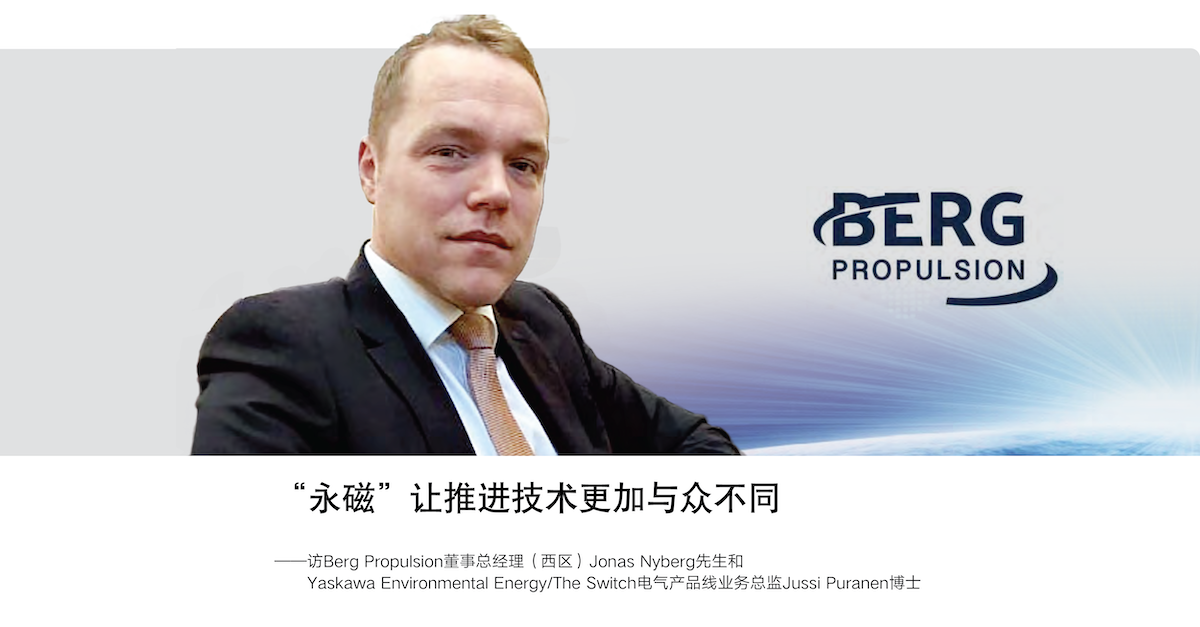The April issue of China Ship Survey magazine published a five-page article about permanent magnet technology used in the propulsion application.
Entitled “‘Permanent magnet’ makes the propulsion technology different,” the article covers the following main topics:
- Permanent magnet (PM) technology as a simple and efficient solution
- The importance of joining forces to collaborate and innovate
- Prerequisites to become one of the mainstream technologies in the marine industry
At the beginning of the article, the journalist writes: “Although permanent magnet machines were invented more than 100 years ago, they haven’t been used in megawatt-class applications until the past few decades. Today, nearly all the top ten wind turbines use the PM generator, with power capacities up to 16 MW.”
“With the increasingly stringent environmental regulations in the maritime industry, the application of PM machines on ships will also become the trend,” he says.
Jonas Nyberg, Managing Director at Berg Propulsion, comments: “What we’re finding is that the direct-drive electric propulsion machines are the best solution in most cases where the vessel propulsion system is based on a diesel, gas or battery-electric power plant. The reason for this is the simplicity of the concept and that there are almost no losses due to the way the solution is integrated. We expect future segments for this technology to be highly demanding applications that put prime focus on reliability and efficiency.”
In the end, the journalist presents the efficiency difference between a PM machine and an induction machine. “According to the study carried out by Yaskawa Environmental Energy / The Switch, a 174,000-cbm LNG carrier with two propulsion lines will save approximately USD 70,000 annually through lower fuel consumption when a PM machine is used. Assuming a vessel lifecycle of 25 years, total fuel savings are, therefore, close to USD 2 million – a significant savings. Exact savings naturally depend on the vessel’s operation profile, annual running hours, main engine specific fuel oil consumption and fuel price, but the number above can be used as a rough estimation.”
